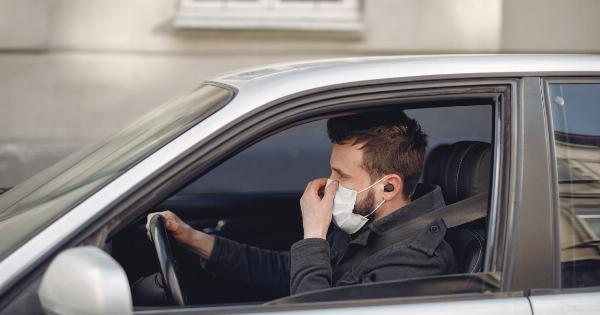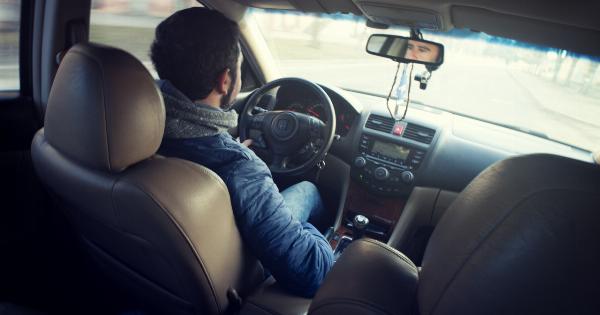Driving while feeling sleepy can be extremely dangerous, leading to accidents and even fatalities.
According to the National Highway Traffic Safety Administration (NHTSA), drowsy driving is responsible for an estimated 100,000 motor vehicle crashes annually in the United States alone. In this article, we will explore the various strategies and tips for combatting sleepiness behind the wheel, ensuring a safe and alert journey.
Understanding the Dangers
Before delving into the solutions, it is essential to grasp why drowsy driving poses such a significant hazard. When you are drowsy, your reaction time slows down, impairing your ability to handle unexpected events on the road promptly.
As a result, you may not be able to hit the brakes in time, avoid an obstacle, or react appropriately to the actions of other drivers.
Furthermore, drowsiness affects your decision-making skills, making it more challenging to assess risks accurately. Your attention span may also be compromised, leading to a decreased awareness of your surroundings.
These combined effects can be catastrophic if you are driving at high speeds or in heavy traffic.
Fatigue and the Circadian Rhythm
The most common cause of drowsy driving is fatigue, which can be attributed to various factors, including sleep deprivation, poor sleep quality, and working long hours.
Understanding your body’s natural sleep-wake cycle, known as the circadian rhythm, is crucial. Typically, the circadian rhythm follows a 24-hour cycle, and the body is naturally inclined to be alert during daylight hours and sleepy during the nighttime.
However, there are instances when the circadian rhythm is disrupted, such as when driving long distances or working night shifts—these disruptions can result in extreme sleepiness and pose a grave danger on the road.
Recognizing the signs of fatigue and taking preventive measures is essential to combat this issue effectively.
Recognizing the Signs of Drowsiness
Identifying when you are too sleepy to drive is crucial in preventing accidents. Some common signs of drowsiness include:.
1. Heavy Eyelids
When your eyelids start to feel heavy or droop, it is a clear indication that you are getting drowsy. This feeling can become particularly pronounced during monotonous drives, such as on highways.
2. Frequent Yawning
Yawning serves as a mechanism to help the brain cool down, but it is also a sign that you are becoming sleepy. Frequent yawning while driving is a definite red flag.
3. Drifting Between Lanes
If you find yourself unintentionally drifting between lanes or onto the shoulder, it is a strong indication that you are struggling to stay awake.
4. Difficulty Focusing
When you struggle to keep your eyes open or have trouble maintaining focus on the road, it is a warning sign that your attention is diminishing due to sleepiness.
5. Daydreaming
Daydreaming or having wandering thoughts while driving can be a result of drowsiness. Your mind may be drifting due to lack of sleep.
6. Impaired Reaction Time
If you notice a delayed response to unexpected events or find it challenging to make quick decisions, drowsiness may be affecting your reaction time.
Preventing Drowsy Driving
Now that we understand the dangers and signs of drowsiness, let’s explore effective strategies for preventing sleepy driving:.
1. Get Sufficient Sleep
The best way to combat sleepiness while driving is to ensure you get enough sleep before embarking on a trip. The National Sleep Foundation recommends that adults aim for 7-9 hours of quality sleep each night.
Adequate rest will help you stay alert and focused on the road.
2. Plan Regular Breaks
When taking long road trips, it is essential to plan regular breaks to stretch, have a snack, and rejuvenate your mind and body. Breaks every 2 hours or every 100 miles are recommended to combat fatigue.
3. Avoid Driving at Your Sleepiest Times
If possible, try to avoid driving during your body’s natural sleepiest hours. For most people, this falls between midnight and 6 am, as well as the midafternoon slump between 2 pm and 4 pm.
Shifting your driving schedule to avoid these hours can significantly reduce the risk of drowsiness.
4. Utilize a Buddy System
Having a travel companion who can take turns driving, especially during long trips, can be a lifesaver. This way, you can rest when feeling drowsy and allow your companion to take the wheel.
5. Drink Caffeine
Consuming caffeine, found in coffee or energy drinks, can help combat sleepiness temporarily. However, it is important to note that the effects of caffeine only last a limited time, and it is not a substitute for sufficient sleep.
6. Take a Power Nap
If you feel drowsy while driving, find a safe place to pull over and take a short power nap. A 20-30 minute nap can recharge your batteries and make you more alert.
7. Engage in Stimulating Activities
When feeling sleepy behind the wheel, try engaging in activities that stimulate your brain and keep you alert. These may include listening to upbeat music, podcasts or audiobooks, or having conversations with passengers.
8. Keep the Environment Optimal
Make sure your driving environment is conducive to staying awake. Adjust the temperature to a cooler setting, as warmth can contribute to drowsiness. Play energetic or high-tempo music, and keep the cabin well-ventilated.
9. Recognize and Address Medication Side Effects
Some medications may have sedative effects or cause drowsiness as a side effect. If you are taking any medication that impacts your alertness, speak with your healthcare provider about potential alternatives or timing adjustments.
10. Public Transportation or Ridesharing
In situations where you are excessively fatigued or know you will be driving for an extended period, consider using public transportation or ridesharing services. This can alleviate the risks associated with drowsy driving altogether.
Conclusion
Combatting sleepiness behind the wheel is crucial for maintaining road safety.
By recognizing the signs of drowsiness and implementing preventive measures, such as planning regular breaks and getting enough sleep, you can significantly reduce the risk of accidents caused by sleepy driving. Always prioritize your well-being and the safety of others on the road.






























